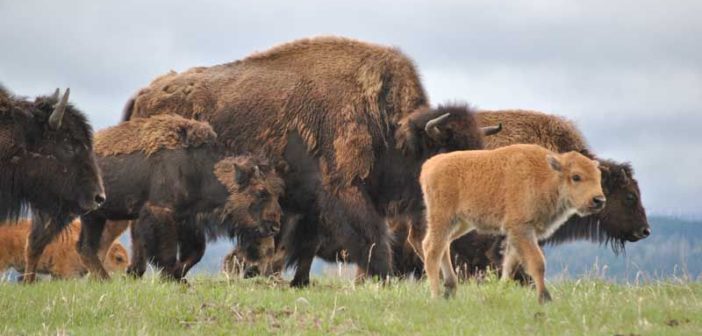While most of the nation was social distancing and self-quarantining last week, the National Park Service was sending hundreds of Yellowstone bison to slaughter. In an effort to stop the senseless killing of our national mammal, Buffalo Field Campaign (BFC), Friends of Animals, and Western Watersheds Project (WWP) filed a complaint yesterday in U.S. District Court, Washington, D.C., asserting the U.S. Fish & Wildlife Service (FWS) unlawfully denied their petition to list the Distinct Population Segment (DPS) of Yellowstone bison under the Endangered Species Act (ESA).
The annual capture and slaughter of the Yellowstone bison herds is highly controversial and extremely unpopular, typically generating global condemnation. Of course, as is appropriate in a time like this, most people’s attention is directed toward keeping themselves and their families safe and healthy. Nevertheless, the destruction of this unique and endangered national treasure cannot be ignored.
The groups claim that the U.S. Fish & Wildlife Service applied the wrong evidentiary standard, and disregarded evidence of factors that imperil the unique and distinct subpopulations of bison roaming the Northern and Central ranges of the Yellowstone ecosystem. FWS’s finding also ignored U.S. District Court Judge Christopher R. Cooper’s order that petitioners’ evidence must be credited and the government cannot “simply pick and choose between contradictory scientific studies.” (Buffalo Field Campaign v. Zinke, 289. F. Supp. 3d 103 (D.D.C. 2018).

“The U.S. Fish & Wildlife Service did not follow the court’s order, which is why we are asking for a reversal of the agency’s finding,” said BFC’s Executive Director James Holt, Sr. “FWS is acting impartially and did not contend with the substantial evidence before it that buffalo are at risk of extinction.”
“The fact that this was FWS’s second attempt at reviewing and assessing the overwhelming evidence that supports listing the DPS of Yellowstone bison as endangered or threatened makes its current violations of the ESA particularly egregious,’’ said Mike Harris, director of Friends of Animals Wildlife Law Program.
Buffalo Field Campaign, Friends of Animals, and Western Watersheds Project are asking the court to reverse FWS’s unlawful finding and order a species status review for Yellowstone’s imperiled bison herds.
“It is long past time for the Service to make a reasonable and justifiable determination about whether these bison deserve protections under the ESA,” said Josh Osher, WWP’s Policy Director. “While the Service continues to produce politically motivated responses that are not in compliance with the Court’s clear direction, bison are being killed at an alarming rate that could jeopardize their future health and existence.”

The groups say there is substantial evidence the DPS of Yellowstone bison is at risk of extinction in the wild due to loss of habitat and range, federal and state regulatory actions targeting the migratory herds for removal, hunting, and climate change. In addition, scientific studies show two distinct herds in Yellowstone with little interbreeding, yet the killing and removal of bison falls disproportionately on one of them (the Central herd), threatening its long-term viability.
Information on the listing petition and court decision is online here.
Read the complaint here
The U.S. Fish & Wildlife Service has 30 days to answer the wild buffalo advocates’ complaint in court.
The wild bison of the Yellowstone ecosystem are the world’s most important bison population in existence. They are the last continuously wild, migratory bison to exist on their native range since prehistoric times. Fewer than 4,000 exist today due to a government plan, the Interagency Bison Management Plan, which is heavily influenced by Montana livestock interests. Since late-February 2020, more than 800 of these bison —nearly 18% — have been eliminated through slaughter, quarantine, and hunting. Bison are the country’s National Mammal, and a sacred, keystone species. Additionally, there has been a steep decline in the Central herd, from 3,531 in 2006 to just over 1,000 in 2019. Federal protection under the Endangered Species Act will ensure a future for this iconic mammal and will help them realize their evolutionary potential.
Featured image: a Yellowstone bison herd. Image credit Buffalo Field Campaign.





